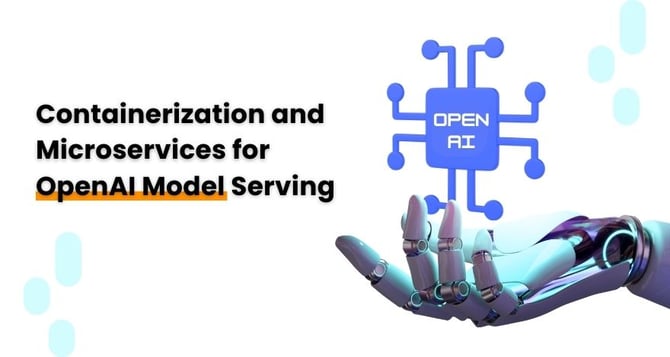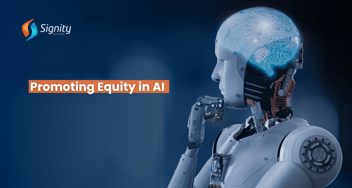Containerization and Microservices for OpenAI Model Serving
OpenAI leverages containerization and microservices for scalable, efficient, and resilient AI model deployment, ensuring future-ready innovations in advanced model serving systems.

In the world of AI model deployment, efficiency, scalability, and flexibility are paramount. OpenAI, a leading figure in artificial intelligence research, has provided us with powerful models. Deploying these models effectively requires a strategy that maximizes resource utilization while maintaining agility. Containerization and microservices architecture are two powerful tools that can achieve these objectives. In this article, we'll delve into the technical aspects of using containerization and microservices for serving OpenAI models.
Containerization: The Foundation
What is Containerization?
Containerization is a technology that allows you to package an application and its dependencies into a single container image. Containers are lightweight, portable, and consistent across different environments, making them an ideal choice for deploying AI models.
Benefits of Containerization for OpenAI Models
1. Isolation: Containers encapsulate the model and its dependencies, ensuring that they don't interfere with other applications on the host system.
2. Portability: A containerized OpenAI model can run on any platform that supports containerization, which is virtually every modern system.
3. Resource Efficiency: Containers share the host OS kernel, making them more resource-efficient compared to traditional virtual machines.
4. Version Control: Container images can be versioned, allowing you to roll back to a specific model version if needed.
Development Steps
1. Choose a Containerization Technology
Popular choices include Docker and container orchestration tools like Kubernetes. Docker simplifies the creation and management of containers, while Kubernetes enables scaling and orchestration.
2. Create a Dockerfile
A Dockerfile is a blueprint for building a container image. It specifies the base image, dependencies, and the commands to set up the environment.
3. Build the Container Image
Run the `docker build` command to build the container image based on your Dockerfile.
4. Run the Container
Use the `docker run` command to launch your containerized OpenAI model. Make sure to expose the required ports for communication.
Microservices Architecture: Scaling and Agility
What Are Microservices?
Microservices is an architectural style where an application is composed of loosely coupled, independently deployable services. Each microservice handles a specific task, promoting modularity and scalability.
Benefits of Microservices for OpenAI Model Serving
1. Scalability: You can scale individual microservices based on demand, ensuring optimal resource utilization.
2. Flexibility: Updating or replacing one microservice doesn't affect the entire application, making it easier to iterate on your model-serving infrastructure.
3. Parallel Processing: Microservices can process requests concurrently, improving overall system performance.
Development Steps
1. Identify Microservices
Divide the components of your OpenAI model serving system into microservices. For example, you might have separate microservices for model inference, caching, and logging.
2. Define Service Contracts
Clearly define the interfaces and communication protocols between microservices to ensure they can work together seamlessly.
3. Develop Microservices
Develop each microservice independently, adhering to the defined service contracts. Use containerization to package microservices for deployment.
4. Container Orchestration
Leverage a container orchestration tool like Kubernetes to manage and scale your microservices. Kubernetes allows you to deploy, manage, and monitor containerized microservices efficiently.
Combining Containerization and Microservices
Benefits of the Combination
When containerization and microservices are combined, you get a powerful architecture for OpenAI model serving:
1. Isolation and Portability: Each microservice is containerized, ensuring isolation and portability.
2. Efficient Resource Allocation: Containers allow fine-grained resource allocation for each microservice, optimizing resource usage.
3. Scalability: Kubernetes, for instance, can automatically scale containers based on the traffic to specific microservices.
4. Fault Tolerance: If one microservice fails, others can continue to operate, enhancing system reliability.
Development Steps
1. Containerized Microservices
Package each microservice as a container image using Docker and create a Dockerfile for each.
2. Deploy Microservices with Kubernetes
Deploy your containerized microservices using Kubernetes. Create pods for each microservice and configure Kubernetes services to expose endpoints for communication.
3. Service Discovery
Implement service discovery mechanisms, such as Kubernetes' built-in service discovery or tools like Consul, to enable microservices to locate and communicate with each other.
4. Load Balancing and Scaling
Set up load balancers and scaling policies to ensure that the microservices can handle varying levels of traffic efficiently.
Challenges and Considerations
While containerization and microservices offer numerous benefits, they also introduce challenges:
1. Complexity: Managing multiple containerized microservices can be complex, requiring robust orchestration and monitoring
2. Network Overhead: Communication between microservices can introduce network overhead, impacting latency and performance.
3. Security: Securing the communication between microservices and managing container security is critical.
4. Monitoring and Debugging: Effective monitoring and debugging tools are essential for identifying and resolving issues in a microservices architecture.
Conclusion
Containerization and microservices architecture are pivotal in the efficient deployment of OpenAI models. They provide isolation, portability, scalability, and agility, which are vital for modern AI applications. By combining these technologies and carefully considering the challenges they present, developers can build resilient and efficient OpenAI model serving systems that are ready for the challenges of the future. As AI continues to evolve, containerization and microservices will remain at the forefront of AI model deployment, ensuring that we can harness the full potential of these advanced models.


%201-1.webp)


.png?width=344&height=101&name=Mask%20group%20(5).png)
















